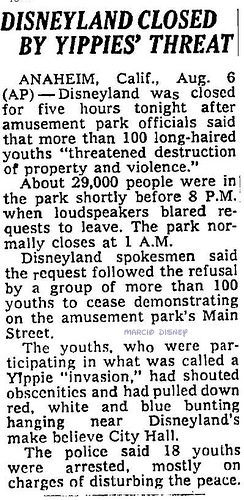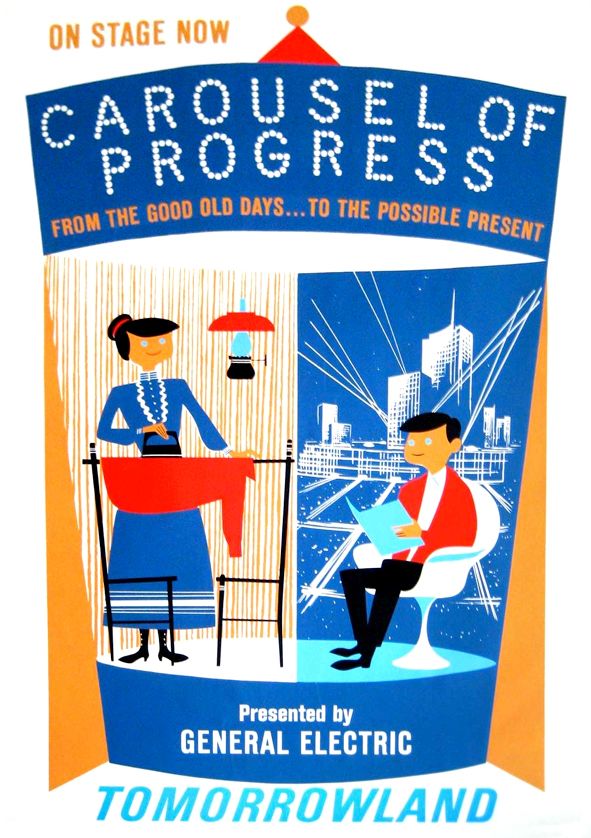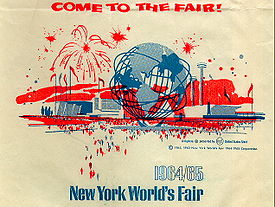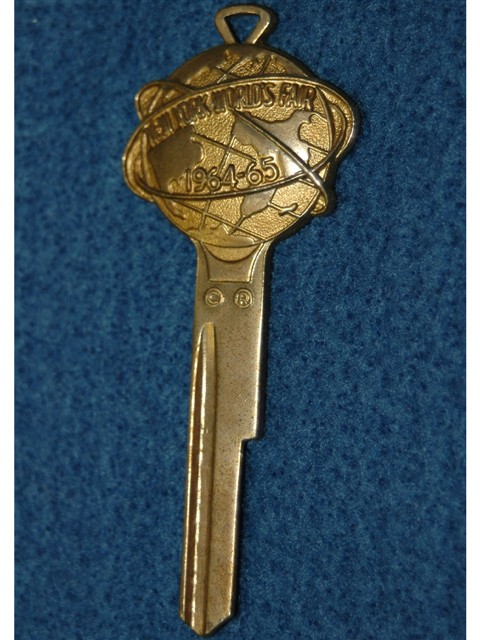The 1950s saw the release of the classic20,000 Leagues Under the Sea, the first in a series of wacky comedies The Shaggy Dogand a popular TV series about the legendary hero Zorro. In the 1960s came Audio-Animatronics®, pioneered with theEnchanted Tiki Room at Disneyland and then four shows at the 1964 New York World's Fair, and Mary Poppins, perhaps the culmination of all Walt Disney had learned during his long movie-making career. But the '60s also brought the end of an era: Walt Disney died December 15, 1966.
Plans that Walt left behind carried the company for a number of years under the supervision of Roy Disney. The Jungle Book in 1967 and The Aristocats in 1970 showed that the Company could still make animated classics, and The Love Bug in 1969 was the highest grossing film of the year. Disney got into educational films and materials in a big way with the start of an educational subsidiary in 1969.
After the success of Disneyland, it was only natural for Walt to consider another park on the East Coast. Prior to his death the Company purchased land in Florida, and the Walt Disney World project, located on some 28,000 acres near Orlando, was announced. It opened October 1, 1971. In Florida, the Company had the space it lacked in California. Finally there was room to create a destination resort, unencumbered by the urban sprawl that had grown up around Disneyland. Walt Disney World would include not only a Magic Kingdom theme park like Disneyland but also hotels, campgrounds, golf courses, and shopping villages. It did not take long for Walt Disney World to become the premier vacation destination in the world.
Roy O. Disney, who after Walt's death oversaw the building and financing of Walt Disney World, died late in 1971, and for the next decade the Company was led by a team including Card Walker, Donn Tatum and Ron Miller — all originally trained by the Disney brothers. One of Walt Disney's last plans had been for the Experimental Prototype Community of Tomorrow, or EPCOT, as he called it. While he died before the plans could be refined, they were brought out again in a few years, and in 1979 ground was broken for the new park in Florida. Epcot Center, a combination of Future World and World Showcase representing an investment of over a billion dollars, opened to great acclaim October 1, 1982.
WED Enterprises (later renamed Walt Disney Imagineering), the design and development division for the parks, had several projects in the works during the early 1980s. In addition to designing Epcot, it was hard at work on plans for Tokyo Disneyland, the first foreign Disney park. Tokyo Disneyland opened April 15, 1983, and was an immediate success in a country that had always loved anything Disney. Now that the Japanese had their own Disneyland, they flocked to it in increasing numbers.
Moviemaking also was changing in America in the early 1980s. Audiences were diminishing for the family films that had been the mainstay of the Company for many years, and Disney was not meeting the competition for films that attracted the huge teenage and adult market. To reverse that trend, Disney established a new label, Touchstone Pictures, with the release of Splash in 1984. At the same time, because of the widespread perception that Disney stock was undervalued relative to the company's assets, two "corporate raiders" attempted to take over Disney. The efforts to keep the company from being broken up ended when Michael Eisner and Frank Wells became chairman and president, respectively.
The new management team immediately saw ways for Disney to maximize its assets. The Company had left network television in 1983 to prepare for the launch of a cable network, The Disney Channel. While the pay-TV service was successful, Eisner and Wells felt Disney should have a strong network presence as well, so in 1985 Disney's Touchstone division began the immensely successful Golden Girls, followed in 1986 by a return to Sunday night television with the Disney Sunday Movie (later The Magical World of Disney and The Wonderful World of Disney). Films from the Disney library were selected for the syndication market, and some of the classic animated films were released on video cassette. Using the sell-through technique, Disney classics soon reached the top of the all-time best seller lists.
At Disneyland, new collaborations with filmmakers George Lucas and Francis Coppola brought Captain EO and Star Tours to the park, and Splash Mountain opened in 1989. Disney's Grand Floridian Beach and Caribbean Beach Resorts opened at Walt Disney World in 1988, and three new gated attractions opened in 1989: the Disney/MGM Studios Theme Park, Pleasure Island, and Typhoon Lagoon. More resort hotels opened in 1990 and 1991.
Filmmaking hit new heights in 1988 as Disney for the first time led Hollywood studios in box-office gross. Who Framed Roger Rabbit, Good Morning, Vietnam, Three Men and a Baby, and later, Honey, I Shrunk the Kids, Dick Tracy, Pretty Woman and Sister Act, passed the $100 million milestone. Disney moved into new areas by starting Hollywood Pictures and acquiring the Wrather Corp. (owner of the Disneyland Hotel) and television station KHJ (Los Angeles), which was renamed KCAL. In merchandising, Disney purchased Childcraft and opened numerous highly successful and profitable Disney Stores.
Disney animation began reaching even greater audiences, with The Little Mermaid being topped byBeauty and the Beast which was in turn topped by Aladdin (1992). Hollywood Records was formed to offer a wide selection of recordings ranging from rap to movie soundtracks. New television shows, such as Live With Regis and Kathy Lee, Empty Nest, Dinosaurs and Home Improvement, expanded Disney's television base. For the first time, Disney moved into publishing, forming Hyperion Books, Hyperion Books for Childre and Disney Press, which released books on Disney and non-Disney subjects. In 1991, Disney purchased Discover magazine, the leading consumer science monthly. As a totally new venture, Disney was awarded in 1993 the franchise for a National Hockey League team, the Mighty Ducks of Anaheim.
Over in France, the park now known as Disneyland Paris opened on April 12, 1992. Eagerly anticipated, the beautifully designed park attracted almost 11 million visitors during its first year. Disneyland Paris is complemented by six uniquely designed resort hotels and a campground. Dixie Landings and Port Orleans, and a well-received Disney Vacation Club enlarged lodging possibilities at the Walt Disney World Resort, while Mickey's Toontown and the Indiana Jones Adventure helped increase attendance at Disneyland. Walt Disney World opened the All-Star Resorts, Wilderness Lodge, the Twilight Zone Tower of Terror, Blizzard Beach, the BoardWalk Resort, the Coronado Springs Resort, the Disney Institute, Downtown Disney West Side and redesigned Tomorrowland in the Magic Kingdom.
The Disney success with animated films continued in 1994 with The Lion King, which soon became one of the highest-grossing films of all-time. It was followed by Pocahontas in 1995, The Hunchback of Notre Dame in 1996, Hercules in 1997, Mulan in 1998, Tarzan in 1999 and Fantasia/2000 at the turn of the century. Toy Story pioneered computer-animation techniques, and was followed by a successful sequel. Disney also continued its strong presence in children's animated programs for television, and found success with sequels to animated features released directly to the video market.
In 1994, Disney ventured onto Broadway with a very successful stage production of Beauty and the Beast, followed in 1997 by a unique staging of a show based on The Lion King and in 2000 by Aida. By restoring the historic New Amsterdam Theatre on 42nd Street, Disney became the catalyst for a successful makeover of the famous Times Square area. A musical version of The Hunchback of Notre Dame opened in Berlin, Germany.
By 1996, there were more than 450 Disney Stores worldwide, and by 1999 that number was up to 725. In Florida, the first home sites were sold in the new city of Celebration, located next to Walt Disney World. Eventually, 20,000 people will call Celebration their home. After the death of the owner Gene Autry, Disney acquired the California Angels baseball team to add to its hockey team, and in 1997 opened Disney's Wide World of Sports at Walt Disney World.
Early in 1996, Disney completed its acquisition of Capital Cities/ABC. The $19 billion transaction, second-largest in U.S. history, brought the country's top television network to Disney, in addition to 10 TV stations, 21 radio stations, seven daily newspapers and ownership positions in four cable networks.
Recent years have seen the release of a group of very popular live action films, such as Mr. Holland's Opus, The Rock, Ransom, Flubber, Con Air, Armageddon, and culminating in the hugely successful The Sixth Sense, which soon reached the 10th spot among the all-time highest grossing releases. Computer animation was showcased in A Bug's Life and Dinosaur.
A whole new park, Disney's Animal Kingdom opened at Walt Disney World in 1998. With a gigantic Tree of Life as its centerpiece, the park was Disney's largest, spanning 500 acres. A major attraction was theKilimanjaro Safaris, where Guests could experience live African animals in an amazingly accurate reproduction of the African savannah. An Asian area opened at Animal Kingdom in 1999. In California, Tomorrowland at Disneyland was redesigned.
As the world moved toward a new century, Epcot became the host of Millennium Celebration, Test Track (the longest and fastest Disney park attraction) opened, and other attractions were revised and updated. The Walt Disney Company welcomed a new president — Robert A. Iger — and the Company reached the $25 billion revenue threshold for the first time.
Disney regional entertainment expanded with DisneyQuest and the ESPN Zone in 1998, and that same year, the Disney Magic, the first of two luxury cruise ships made its maiden voyage to the Caribbean, stopping at Disney's own island paradise, Castaway Cay.
2000 opened with the release in IMAX theaters of an almost totally new version of Fantasia entitledFantasia/2000. Other classically animated features were The Emperor's New Groove, Atlantis: The Lost Empire, Lilo & Stitch, Treasure Planet and Brother Bear. Continuing collaborations with Pixar brought the computer-animated blockbuster, Monsters, Inc. Popular live action productions continued withRemember the Titans, Mission to Mars, Pearl Harbor, The Princess Diaries, and The Rookie. The new cable network, SoapNet, was launched, and award-winning productions on ABC included The Miracle Worker, Anne Frank, and Child Star: The Shirley Temple Story.
DVD releases became increasingly popular, especially when the company began adding generous amounts of bonus material for viewers. Snow White and the Seven Dwarfs' DVD in 2001 sold more than one million units on the first day of release.
For the first time, in 2001, Walt Disney Attractions opened two new theme parks in the same year. In February, Disney's California Adventure opened after several years of major construction which transformed the entire Anaheim area. The new park celebrates the history, culture and spirit of California, with areas ranging from a Hollywood Pictures Backlot to the amusements of Paradise Pier. Joining it was an upscale shopping area, Downtown Disney and the Grand Californian Hotel, celebrating the Craftsman style of architecture. Across the Pacific in Japan, Tokyo DisneySea opened in September, looking to the myths, legends and lore of the ocean as the inspiration for its attractions and shows. March, 2002, saw the opening of another foreign park, Walt Disney Studios, featuring the history and lore and excitement of the movies, adjacent to Disneyland Paris. Ground was broken in January, 2003, for Hong Kong Disneyland.
In 2001, the entire Walt Disney Company honored the 100th Anniversary of the birth of its founder, Walt Disney. The celebration, called "100 Years of Magic," was centered at the Disney-MGM Studios theme park in Florida, and included several parades, an exhibit of archival memorabilia and the installation of a gigantic Mickey's sorcerer cap in the Chinese Theater plaza.
2003 saw two Disney films grossing over $300 million at the box office — Pirates of the Caribbean: The Curse of the Black Pearl and Disney-Pixar's Finding Nemo. In fact, Disney became the first studio in history to surpass $3 billion in global box office. In October, Mission: Space opened at Epcot to great acclaim, and the following month the Company celebrated the 75th anniversary of Mickey Mouse. As the year drew to a close the Pop Century Resort opened at Walt Disney World.
After years of partnering, Disney acquired The Muppets and Bear in the Big Blue House in April 2004. Senator George Mitchell became chairman of the board, and movie theaters welcomed The Incredibles. ABC had a rebirth with such popular series as Desperate Housewives, Lost and Grey's Anatomy.
















